What has eight legs, spins webs, drinks the blood of plants, and spreads fear into the hearts of plant lovers everywhere?
If you guessed spider mites, you’re spot-on! If not, there’s a critter you really need to know about. Let’s look at how to get rid of spider mites and what they can do to your plants if you don’t.
Getting to Know Spider Mites
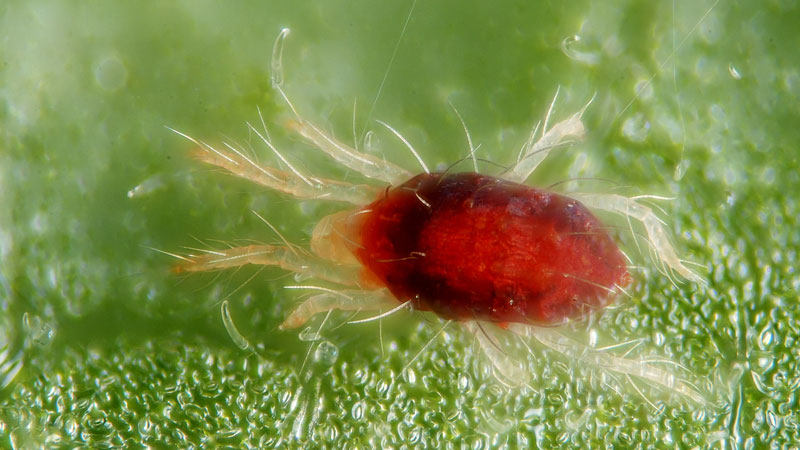
Spider mites are neither truly spiders nor mites, but are fellow arachnids hailing from the family Tetranychidae. They’re generally the size of a period, measuring in at a miniscule 1/50th of an inch.
The most common type is the two-spotted spider mite (often also called “red spider mite” due to its brownish red appearance). Unfortunately, you might not notice these tiny red bugs on plants until the damage is already apparent.
See Also: Getting Rid of Dust Mites
Spider Mite Lifecycle
While there are some exceptions, most spider mites lay eggs capable of overwintering. The eggs hatch into tiny larvae that have only six legs.
The additional pair is formed a few days later when they molt into the first of three nymph instar stages. In hot, dry conditions, this process may take only five days.
A single adult female is capable of laying up to 300 eggs within a few weeks. This means a major spider mite outbreak can happen just a few weeks from the presence of a single fertile adult.
What Do Spider Mites Eat?
Spider mites have a proboscis similar to aphids, thrips, and scale insects such as mealybugs which allow them to pierce a plant’s outer surface and suck out its fluids.
Even one mite can put a plant at risk of infections, but large spider mite populations can actually kill an entire plant, not just a portion. They prefer to dwell on the undersides of leaves, where it’s more difficult for predators to spot them.
Read Also: What Do Clover Mites Eat?
Spider Mite Webs
These tiny critters are able to spin webs which are chemically unique from both cobweb spiders and regular spider silk.
Their tight, messy webs form bridges between leaves, serve as protection for egg sacs, and are even used as parachute material to allow spider mites to ride air currents from one plant to another.
Spider Mite Damage
These common pests will generally do less damage to outdoor plants than indoor plants due to the increased number of natural predators. While damage is often cosmetic, heavy infestations can cause massive agricultural losses.
While webbing may be the biggest telltale sign of spider mites, it’s not the only indicator. They’ll pierce the underside of plant leaves, drinking the sap. This causes visible damage in the form of yellow spots on the tops of leaves. While this is initially a cosmetic issue, continued feeding can slowly kill the leaf.
Additionally, infected plants will become more vulnerable to disease. The feces, known as honeydew, can attract powdery mildew, sooty mold, or even additional pests. The only way to keep plants healthy is to take care these plant-feeding mites as soon as you notice an infestation.
Agricultural Impact
Due to their feeding habits, spider mite damage can significantly harm gourd and melon plants such as squash and watermelon, increasing their risk of sunburn and reducing yields.
They’re also known to directly attack plant pods, such as beans and peas. Ornamentals suffer more aesthetic damage, but are very popular hosts.
How Spider Mites Get Indoors
These critters often get in the house through open doors and windows, as they’re small enough to fit through screens. Putting down a layer of essential oils on window sills can help if the mites land on it while still potent.
However, there’s no surefire way to keep them from getting into your home. Even when you bring in that live Christmas tree each December, you’re likely bringing spider mites into your home as well.
Are Red Spider Mites Harmful to Humans?
Unlike many other arachnids, red spider mites and their kin are completely harmless to people and pets. That said, an established population can cause indirect harm through agricultural destruction.
t in the house through open doors and windows, as they’re small enough to fit through screens. Putting down a layer of essential oils on window sills can help if the mites land on it while still potent.
However, there’s no surefire way to keep them from getting into your home. Even when you bring in that live Christmas tree each December, you’re likely bringing spider mites into your home as well.
Are Red Spider Mites Harmful to Humans?
Unlike many other arachnids, red spider mites and their kin are completely harmless to people and pets. That said, an established mite population can cause indirect harm through agricultural destruction.
See Also: 11 Bed Bug Lookalikes
Getting Rid of Spider Mites
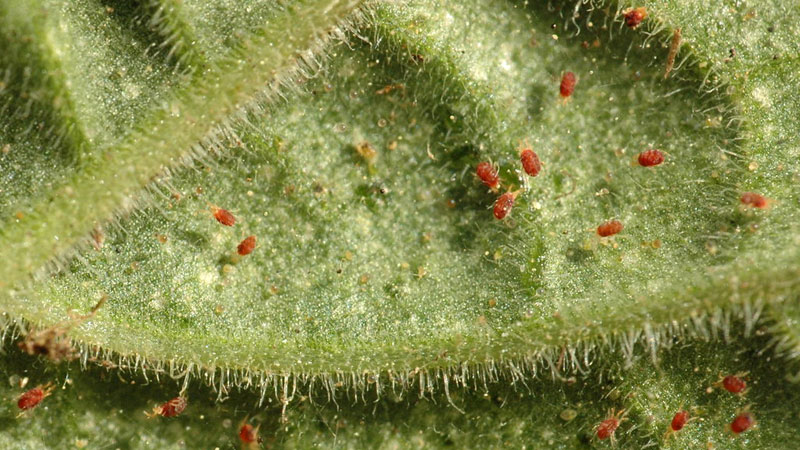
It can be tough to keep your plants completely safe from a spider mite infestation due to their small size and prolific breeding. However, there are several ways to reduce the risk of an infestation, as well as many ways to kill these pests once they’ve arrived.
Be warned: a lot of other sites will suggest knocking spider mites and other pests off of infested plants with a stream of water. However, this does nothing to kill these bugs, so you’re basically just dislodging them temporarily or inviting them to infest other plants.
See Also: How to Get Rid of Bird Mites
How to Kill Spider Mites
As tiny as they are, it’s not too difficult to kill twospotted spider mites once you’ve discovered their presence. Their ability to breed quickly means it might be a while before you manage to wipe out the entire population. Thankfully, a combination of methods usually does the trick in slightly less time.
When possible, go for natural remedies. They may not always be as immediately effective as chemical insecticides, but they’re safer and won’t create superbugs.
Also, be warned that these web-spinning mites love to travel. You should automatically treat any nearby plants as well to curb the spread of spider mites.
Neem Oil
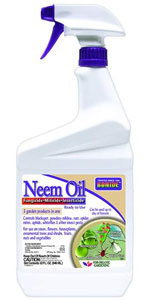
It’s also completely non-toxic to humans and pets unless you’re drinking it straight from the bottle. You can purchase neem oil on its own for the best results or as a pre-mixed home remedy.
When using neem as an indoor foliar spray, try using insecticidal soap for the emulsifier. You can also add essential oils for additional potency.
However, you should try to avoid using such additives outdoors. A neem foliar spray that uses pure castile soap or Dawn dish soap will dissipate without any residue within an hour of use, making it safer for use around beds if treatment is applied at dusk or dawn.
Isopropyl/Rubbing Alcohol
These two substances are probably the best spider mite killer if you have the patience to use them properly. Stick with 70% or lower (like this one) so there’s less risk of drying out the plant and dip a Q-tip or cotton ball into the alcohol.
This method can take a long time, since you’ll have to completely wipe the top and underside of leaf surfaces, as well as the stems, crevasses and joints, and any other surfaces the plant has for you.
The good news is this kills everything from larvae to adults instantly on contact.
Related: Does Rubbing Alcohol Kill Bed Bugs?
Working With Natural Allies
As with all struggles in life, you’re not alone even if it feels that way. A wide range of natural enemies and pest-repelling plants are out there willing to help. Consider letting them become a natural part of your indoor and outdoor growing habits.
Using Natural Predators
There are quite a few beneficial insects that will feed on spider mites if given the chances. These natural enemies can protect plants in the garden, on the patio, or in greenhouses.
One particularly effective (and unexpected) ally is Phytoseiulus persimilis, a species of predatory mite you can buy.
Other allies include the usual suspects, such as Japanese lady beetles, lacewings, ladybugs, minute pirate bugs, and the aptly-named spider mite destroyer. Unfortunately, you might be reluctant to let these little helpers indoors, so their benefit has its limitations.
Plants That Repel Spider Mites
As longtime readers are no doubt aware, we’re huge fans of complimentary/companion gardening, i.e. planting a variety of plants which protect and feed each other so you have less work to do.
There are a number of plants which actively repel spider mites that work great for both indoor and outdoor settings. Here are some of the most popular:
Cilantro (AKA Chinese Parsley)
This useful kitchen herb has a smell pests hate. Simply plant or place some cilantro plants near flowers and crops, then let the plant do its thing.
Coriander
Another popular kitchen herb, this plant naturally repels spider mites and other pests while being useful in cooking. It’s a little big for most indoor herb gardens (it can reach three feet tall), but the seeds can be ground and used in pest repelling sprays that work anywhere.
Dill
This relative of carrots has a smell spider mites hate. It’s also a highly versatile kitchen herb. Simply plant it in your garden or keep a small indoor pot near other plants to let it do its magic.
Garlic (and Its Relatives)
This pungent superfood sends critters of all sizes scurrying away, even relatives! Growing a number of these plants in your garden make for an effective barrier, and sprays containing garlic do wonders.
Plants Containing Pyrethrin
Pyrethrin is a chemical pesticide that used to be quite popular, but is slowly losing popularity due to its toxic nature. However, plants that contain the substance (such as chrysanthemums) naturally are usually non-toxic, making them great natural repellents when planted in the garden or potted in the home.
Shasta Daisy
Serving as a lure for beneficial insects, some strategically-planted shasta daisies will not only add beauty to your garden or yard, they’ll draw ladybugs and other natural enemies that will then feast on any pest that tries to set up home in your garden.
- How to Get Rid of Hawks - March 8, 2024
- How to Get Rid of Pill Bugs (Rolly Pollies) - March 1, 2024
- How to Get Rid of Groundhogs (Woodchucks) - February 5, 2024

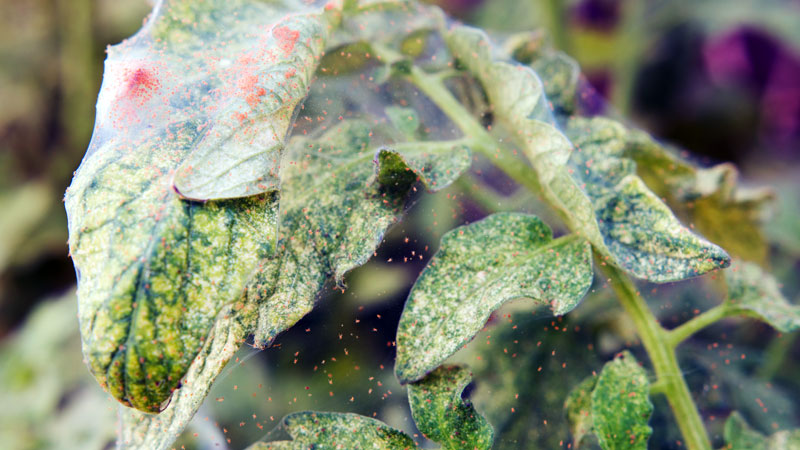
 Just tell me how to get rid of ’em.
Just tell me how to get rid of ’em.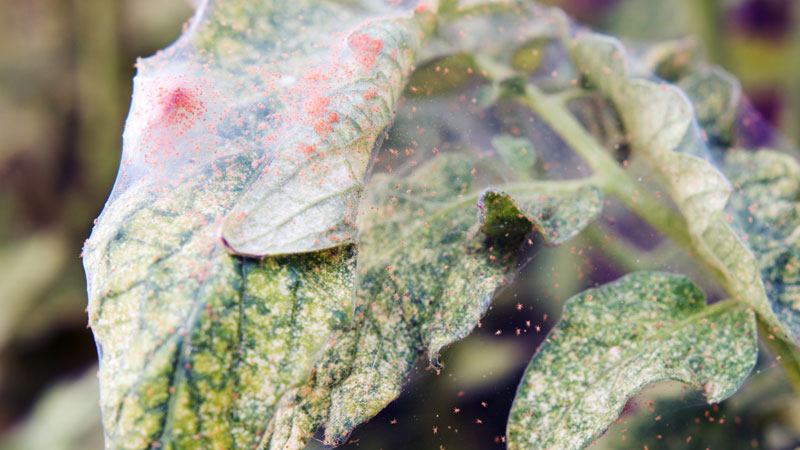

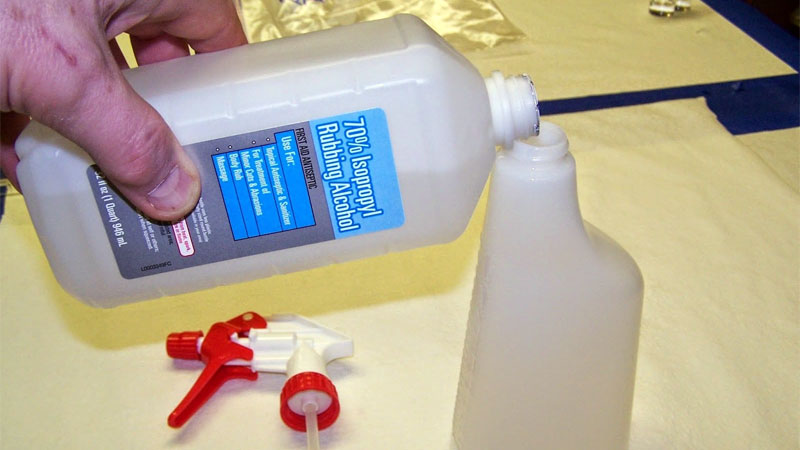
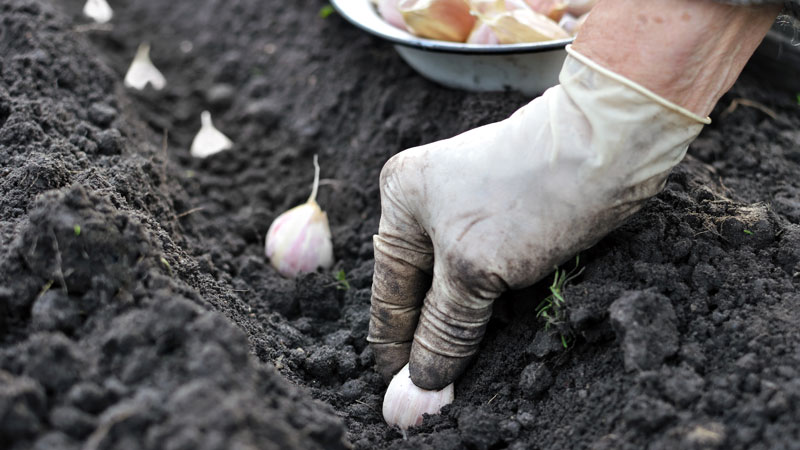
My coriander is the main victim of the mites, with all other plants being left generally unaffected.
I am putting the alcohol on my scalp and all of the white things start coming out. I know there are an over abuntant of some type of mites in my scalp. I will use the neem oil under a shower cap at night How long will it take to get rid.?
I think the “white things” are flakes of skin/dandruff you’re creating by drying out your scalp with the alcohol….
No you are wrong. The white things are grainy and some of the white substances flys with a light flashing like a firefly and its not dandruff. It would be good if you have heard of it or seen it before. It would make my life so much better.
HI. My name is Joanne, and my husband is bit all over on his body. We took down a 6ft Pine Tree which had spider mites on it. We have used cream from Doctor, Spray, Benadryl, you name it. This has gone on since the last week in April. Please help. Thanks
Will isopropyl alcohol rid my windows of mite eggs?
It will kill them on contact but won’t keep spider mites away indefinitely. Be careful using alcohol on some surfaces so you don’t damage it. It’s best to test in a small unseen area first.